Every year, home offices that provide centralized management and administrative support to chain organizations—such as hospital systems and skilled nursing facility companies—must complete and submit Medicare’s Home Office Cost Statement, better known as Form CMS-287-22.
At BESLER, we know the ins and outs of this form are a source of anxiety for many reimbursement professionals. Let’s distill the essential updates and provide clarity on the most important requirements, pitfalls, and possible upcoming changes based on our recent Reimbursement Symposium presentation.
What Is a Home Office and Why Does It Matter for Medicare?
A home office in the Medicare context is an entity providing centralized accounting, management direction and control, payroll and personnel services, purchasing and procurement, and administrative services to more than one Medicare-certified provider, all under common ownership or control. The detailed costs incurred by the home office are allocated across the provider chain through the annual Medicare Cost Report—specifically, Form CMS-287-22.
To be eligible:
- The home office must serve chain members and have costs directly related to patient care.
- Approval from CMS (through the Medicare Administrative Contractor) and an assigned home office number are required.
- A detailed, annually updated Form CMS-287-22 must be filed to allocate and support costs claimed by the provider chain.
Overview of CMS-287-22 Schedules
Form 287-22 isn’t just a single worksheet: it contains several “series” of schedules that break down and allocate home office costs in a transparent, CMS-compliant way.
Here’s what each series covers:
| Series | Purpose |
| S Series | Home office and chain status, certification, and demographics (incl. listing all components receiving allocations). |
| A Series | Documentation of home office costs by expense type and summary of costs by allocation method (Direct, Functional, and Pooled). |
| B Series | Direct allocation of capital and non-capital costs to chain components. |
| C & D Series | Functional allocation of costs to components, based on statistics like FTEs or square footage. |
| E Series | Pooled allocation when direct or functional methodologies aren’t feasible. |
| F Series | Summaries of all allocated values by component, helping reconcile totals and categories. |
| G Series | Home office and chain organization financial statements. |
The Critical Role of S and A Schedules
- Schedule S-2: Lists all components receiving an allocation (providers, non-healthcare entities, and regional divisions). This forms the backbone for the line items reported in subsequent schedules.
- Schedule A: Documents the types of home office expenses, which determines how costs must be allocated downstream. Costs are separated into categories such as capital, salaries, benefits, interest, and various “other” expense categories.
Common Challenges and Important Nuances
- Allowable Costs: Costs not allowable for a provider aren’t allowable as allocated home office costs either. For example, interest on loans between related parties is generally not allowable; only interest from unrelated loans used for patient care qualifies.
- Management Fees: These are typically unallowable unless a specific exception applies and must be backed out through Schedule A-8-1.
- Owner Compensation and Organization Costs: These must be reasonable, directly related to patient care, and, for organization/start-up costs, properly amortized.
- Schedule A-6 Reclassifications: This crucial form ensures costs are moved into correct expense categories before allocation, helping maximize accuracy and compliance.
- Component Identification: Providers listed on Schedule S-2 must accurately reflect their main provider numbers. If fiscal years differ between providers and the home office, each must be listed for its relevant year—with no FY overlap.
The Flow of Data Through the Form
Schedules are tightly linked: the setup on S-2 and A governs how costs are allocated across B–E, and all allocated amounts are tallied and summarized on the F schedules. Any misalignment, errors in component reference, or inconsistencies in totals could result in rejections or corrections by CMS.
Looking Forward: Anticipated Changes?
Based on the most recent CMS guidance, no official changes to the structure or requirements for Form 287-22 have been published. However, possible updates are a constant topic of discussion:
- New columns may be added for wage index-related benefit tracking and home office hours allocations.
- Potential benefit analysis similar to hospital reporting (like Worksheet S-3, Part IV in 2552-10) may appear.
- Additional lines might be introduced to separate capital and non-capital interest expense at a more granular level.
Practical Takeaways
- Complete and Accurate Documentation Is Vital: Every cost, adjustment, and allocation must be supported and clearly traceable from your general ledger to each schedule.
- Reclassify Before Allocating: Use Schedule A-6 to clean up misclassifications before any allocation logic is applied.
- Stay Informed: Even though there are no official future changes today, review CMS instructions annually and watch for industry updates.
BESLER Can Help
BESLER’s reimbursement experts can guide you every step of the way, from preparing complex home office cost statements to defending your allocation methods in audits. Contact us with any questions, and be sure to check our website Insights for additional Medicare compliance insights.
This post is based on BESLER’s 2025 Reimbursement Symposium, “Update on 287”, as presented by BESLER Reimbursement leaders with decades of hands-on Medicare cost reporting expertise.




